Germany is well known for its bustling cities, fine dining, and beers. But only that, Germany is also home to some of the best natural attractions in the world. A land of mountains, great seas, and ancient forests, Germany is among one of the best places to visit for a traveler. For a chance to know more about its rich history, natural beauty, traditions, and culture, hop on to the next flight to Germany and explore the unique and natural wonders of this beautiful country. On our website, you will find local private English-speaking tour guides in every province of Germany, you can choose a personal tour guide who speaks your language and have a good knowledge of the region, culture, and nature of this wonderful country!
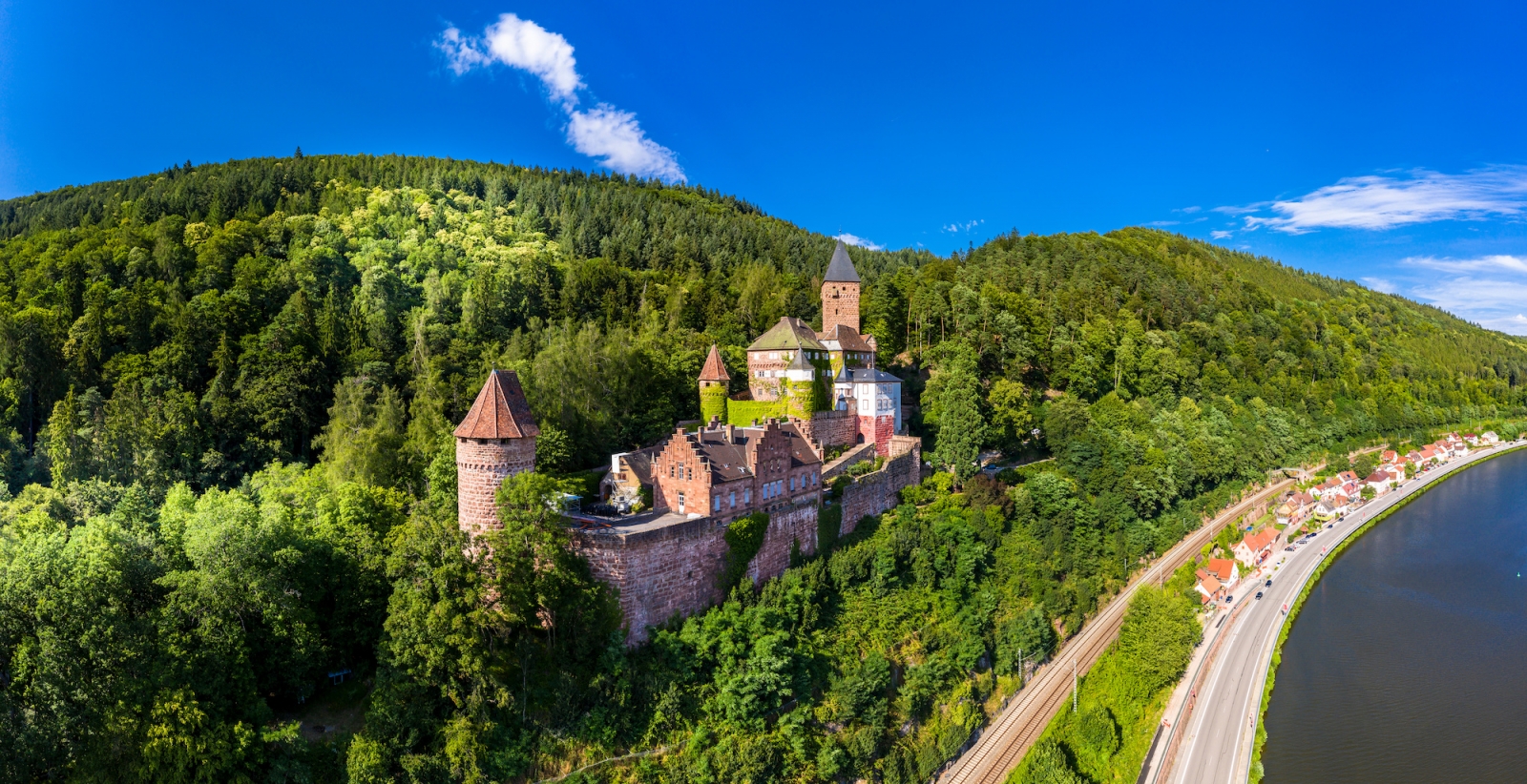
The Zwingenberg castle is a perfectly conserved medieval fortification from the 14th century and is personally possessed and occupied by Ludwig Prince of Baden. Private guided tours are available for all people - adults and children. Here you can have an exceptional adventure. Even the kids will not be dissatisfied. For instance, you may integrate a private guided tour with a wine tasting at the local family’s winery. Guided private tours are also possible for little groups of 2 people with a minimum entry cost of 50 €. The only time of the year when the entrance with private guided tours are restricted is during the open-air festivals from mid-July until mid-august!
Below is a list of some of the natural wonders of Germany that are a must-see for anyone who intends to visit the country
Wadden Sea
The Wadden Sea spreads across 1,143,403 hectares and contains one of Denmark’s largest national parks. The Wadden Sea is not only known for its size but also for being home to more than 3,200 wildlife species including birds, seals, mussels, fish, and much more. The sea is surrounded by many biomes which include tidal channels, dunes, coasts, and beaches.
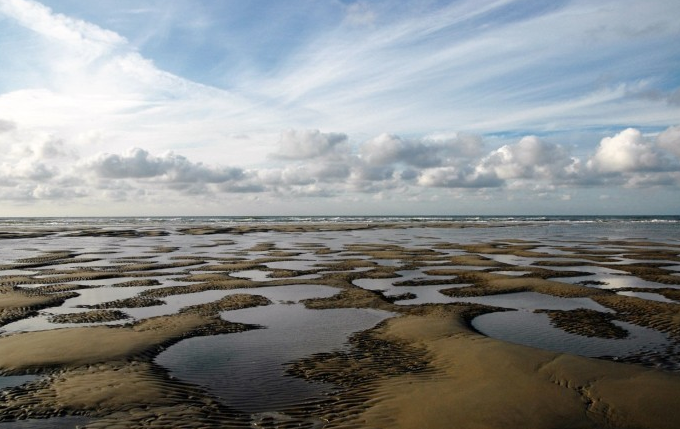
But one of the main attractions of the Wadden Sea is the Wadden Sea mudflats which are part of the UNESCO World heritage and located on the northern coasts of Germany. The mud flats are the world’s largest unbroken area of mud flats and are flooded twice every day.
There are many other spots to visit nearby, and many resorts can be found along the coast for tourists. You can also sign up for mudflat walking if you are more on the adventurous side. The hike accompanied by a local private English-speaking tour guide in Germany lets you walk along waist-high water and mud to get to different islands during low tide.
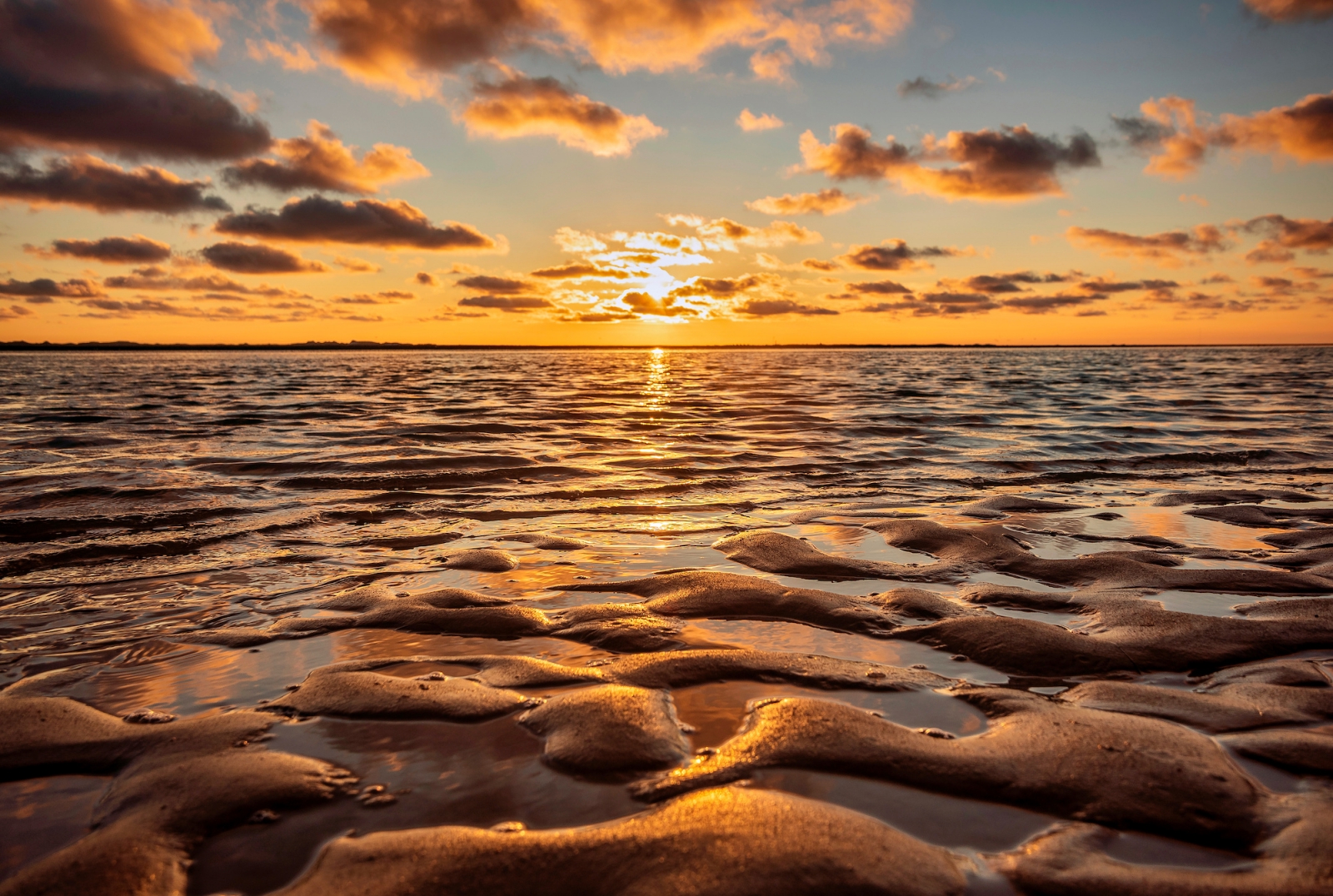
Zugspitze
Zugspitze is the tallest mountain in Germany and is regarded as one of the natural wonders to see on your trip to Germany. A Zugspitze peak of 2962 meters (9,718 feet) is a great place for hiking enthusiasts. Zugspitze contains three of Germany’s largest glaciers, Northern Schneeferner, Hollentalferner, and Southern Schneeferner.
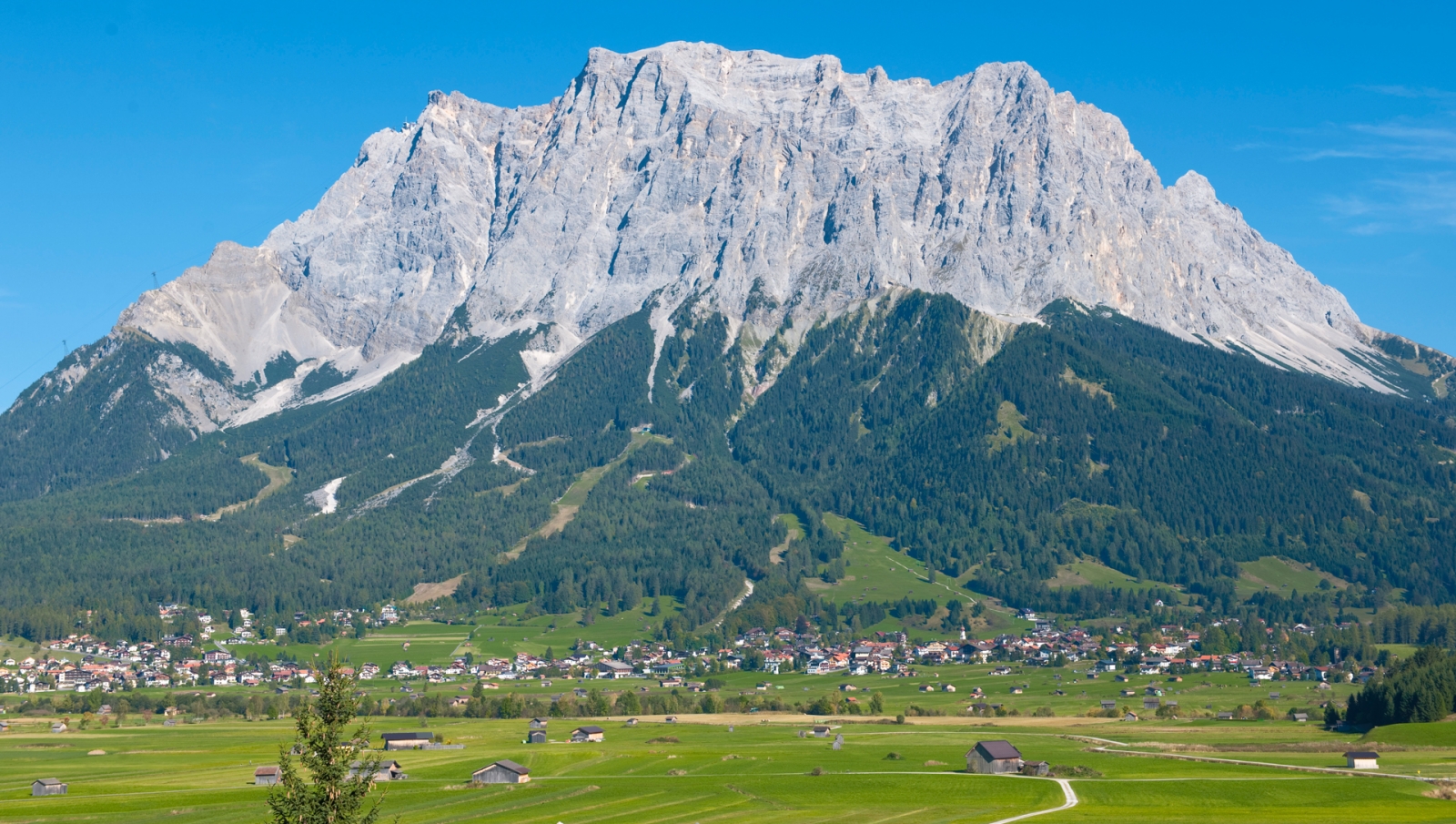
The mountains are home to a number of animals and birds including golden eagles, alpine accentors, rock ptarmigans, capercaillie, hazel and black grouse, chamois, red deer and squirrels, weasels, marmots, and much more. Local English-speaking tour guides in Germany specializing in bird-watching will help you to choose the right itinerary and perfect locations for this activity!
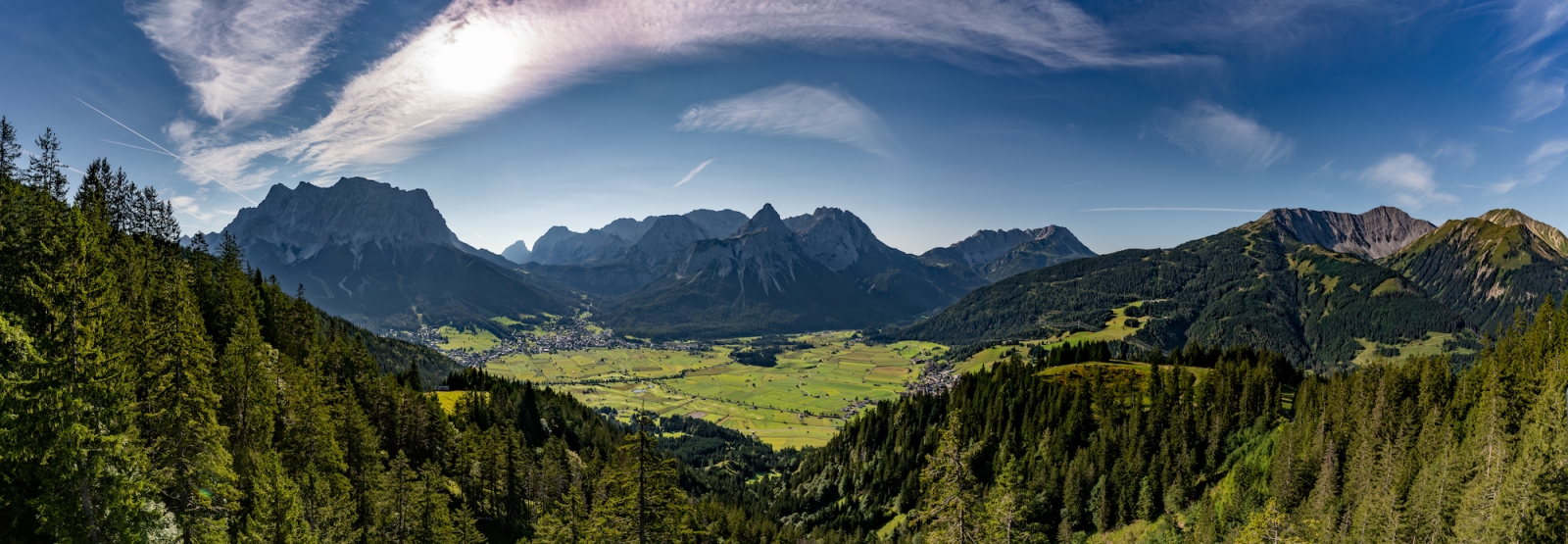
Schwarzwald
Located in southwestern Germany near the Rhine Valley, Schwarzwald is spread across a total of 11914 sq km (4,600 square miles). Schwarzwald translates as "Black Forest" and is typically known as Schwarzwald around the world.
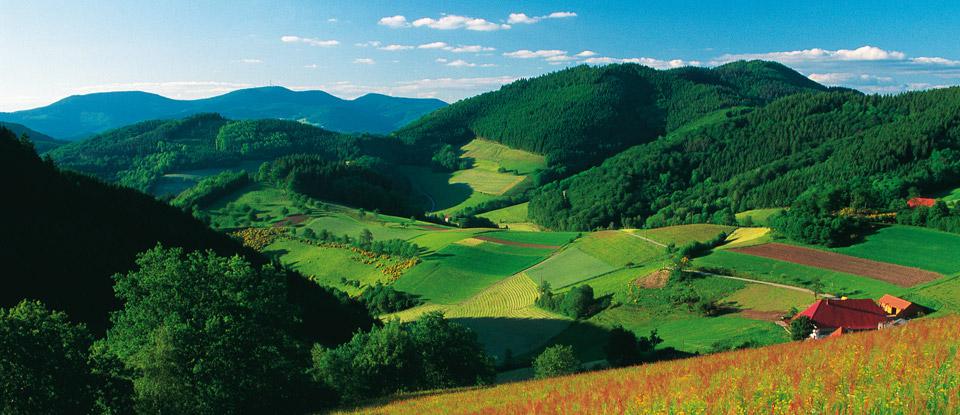
The name Schwarzwald or The Black Forest comes from the trees and shrubs that make up the forest so thick that barely any sunlight passes through the forest anymore. It is a great place to visit if you love transcendent and mystical settings. The Forest is also home to a number of animals. No other region in Germany has as many large protected areas as the Black Forest, and almost the entire area is covered by the national park, two nature parks, and a biosphere reserve; Black Forest National Park, Nature Park Black Forest Mitte/Nord, Nature Park Südschwarzwald and Biosphere Reserve Black Forest.
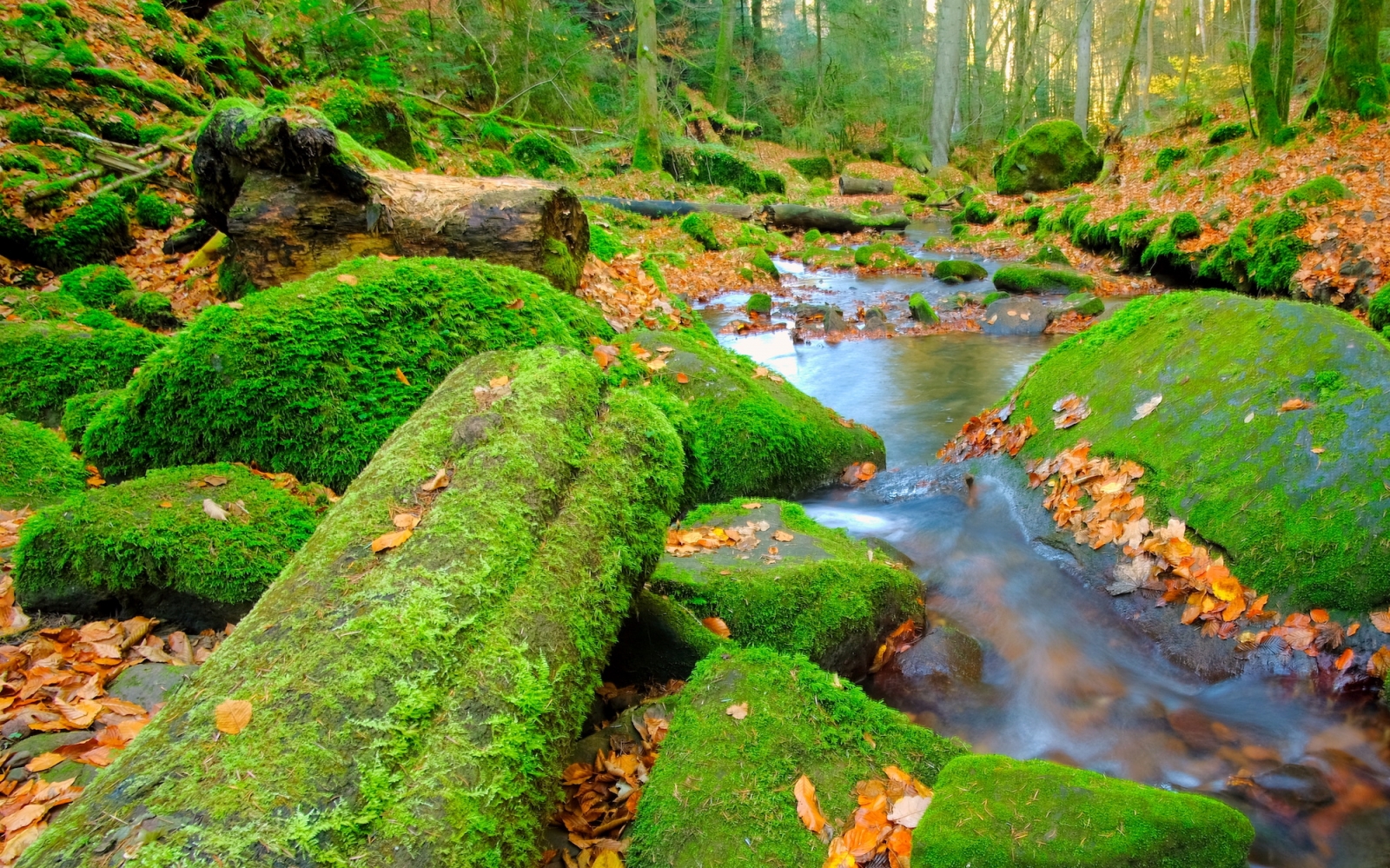
Schwarzwald National Park has existed since January 1, 2014, as the first and so far only national park in Baden-Württemberg. A national park is of course a long-term project because nature does not chase itself away and it can take decades or centuries before nature finds its way back to its original rhythm and the forest changes noticeably. But there is already much to discover.
In March 2021, the new National Park Center will open its gates to visitors. With the new interactive exhibition about the forest, cinema, viewing promenade, shop, and café, the new national park center will be worth a visit, in the middle of the beautiful nature of the northern Black Forest - even in bad weather. Here you will be able to learn a lot about the natural development of the Black Forest.
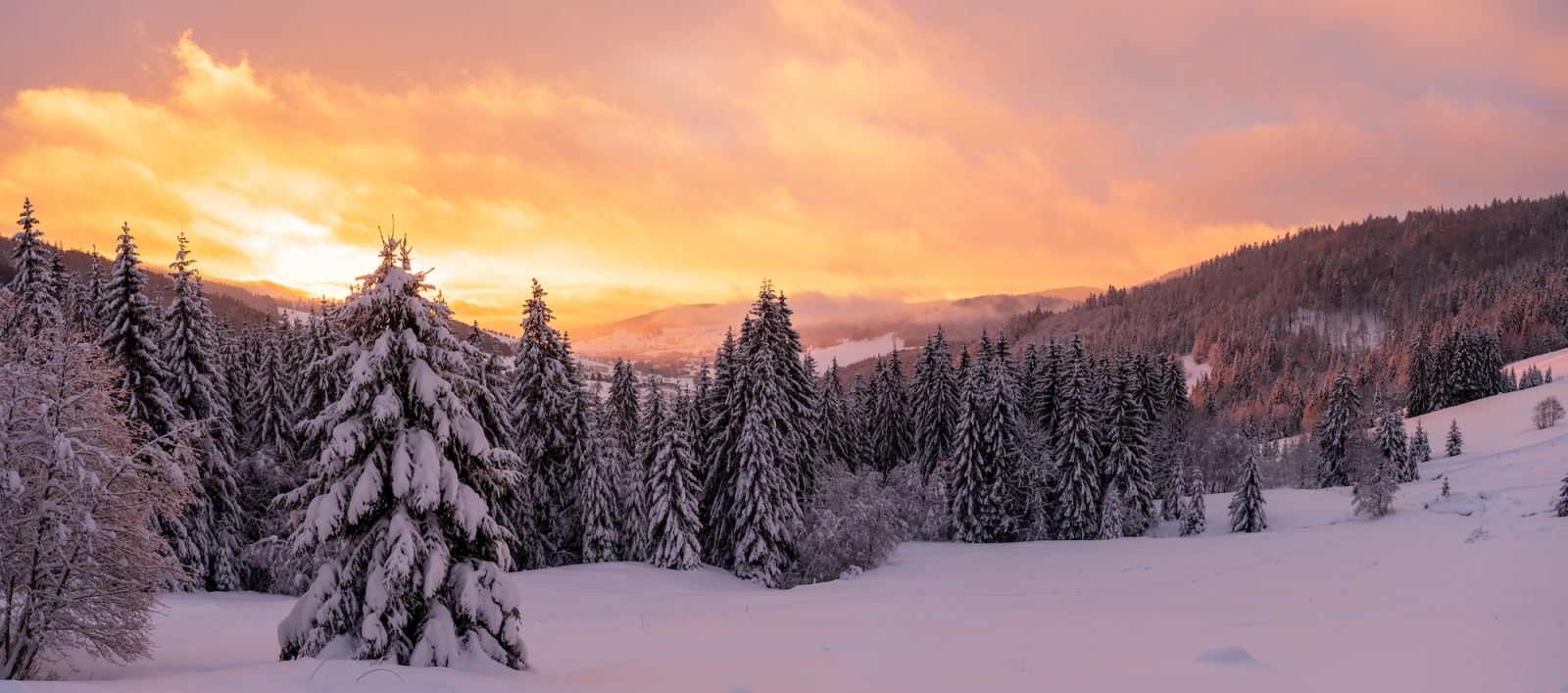
Breitachklamm Gorge
The Breitachklamm Gorge is a canyon that is perfect for tourists and gives an amazing view during two times of the year. You can either visit the canyon during the summer to explore the green trees and waterfalls that surround the canyon, or you can visit it in the winter when everything is blanketed with snow and icicles.
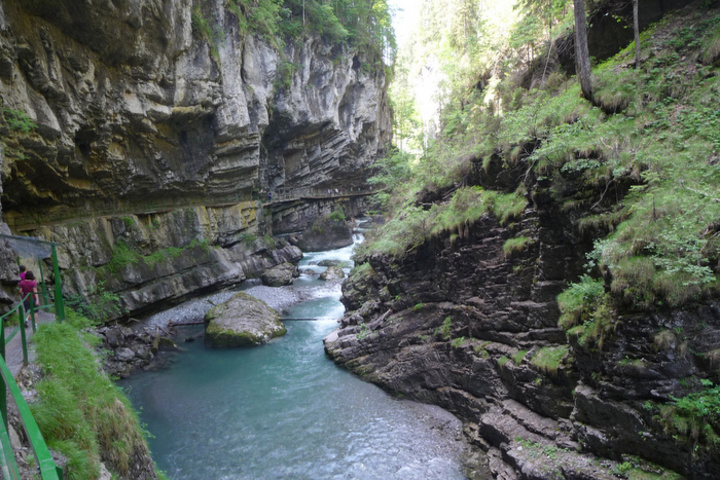
Naturally created by the Breitach River, with a manmade trail for hikers, this canyon is a great attraction spot for tourists.
Barbarossa Cave
Discovered in 1865, the Barbarossa Cave is located near the village of Rottleben. The Barbarossa Cave or Barbarossahöhle is composed of gypsum and is about 15,000 square meters in size.
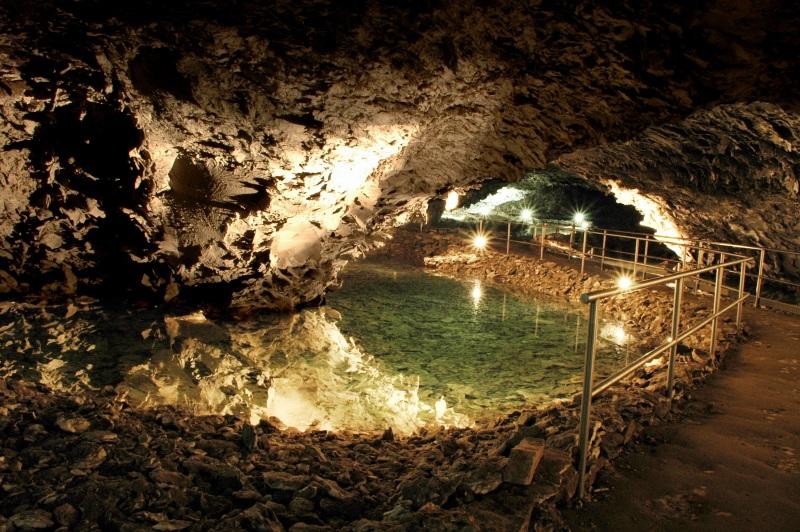
The cave also consists of clear lakes which have a green color to them due to the gypsum. It is one of the largest gypsum caves in Germany. You can visit the Cave any day from 10 am to 5 pm for a small fee of 7 €.
Teutoburg Forest
The Teutoburg Forest holds a special place in history for Germany as it was the grounds for the battle between the Roman Empire and the German tribes in 113–101 BC.
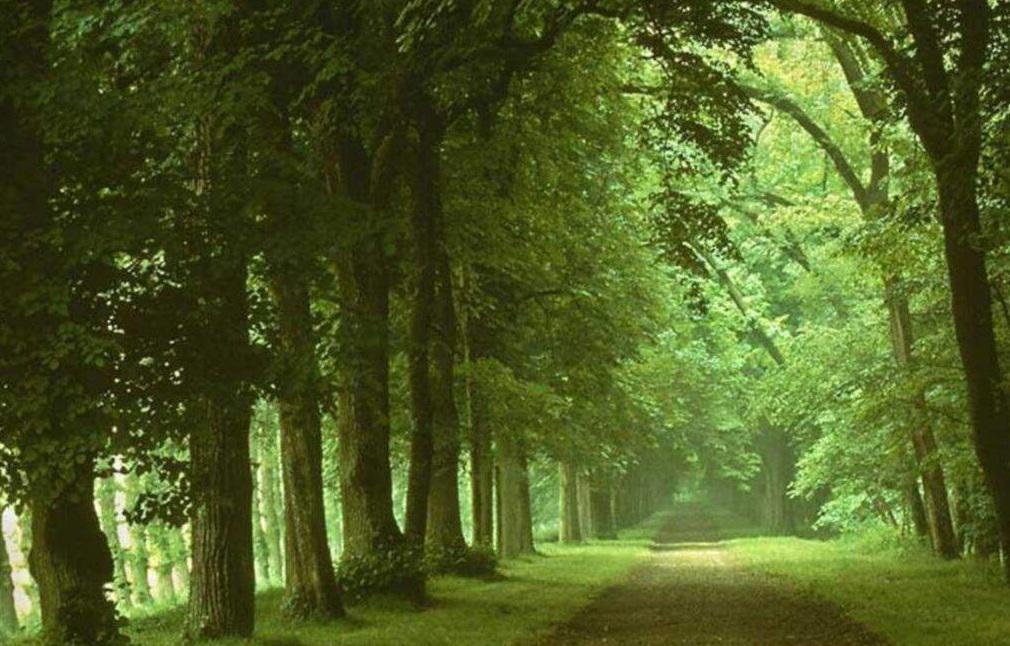
The Teutoburg Forest is a great place for hikes and contains many trails for people. Divided into two parks, the Teutoburg Forest has a lot to offer including many attraction spots and wildlife to explore.
Bavarian Alps
Located in the Eastern part of the Alps, the Bavarian Alps extend to 70 miles and hold beautiful landscapes and views which change with the seasons thus creating some of the best sceneries to view.
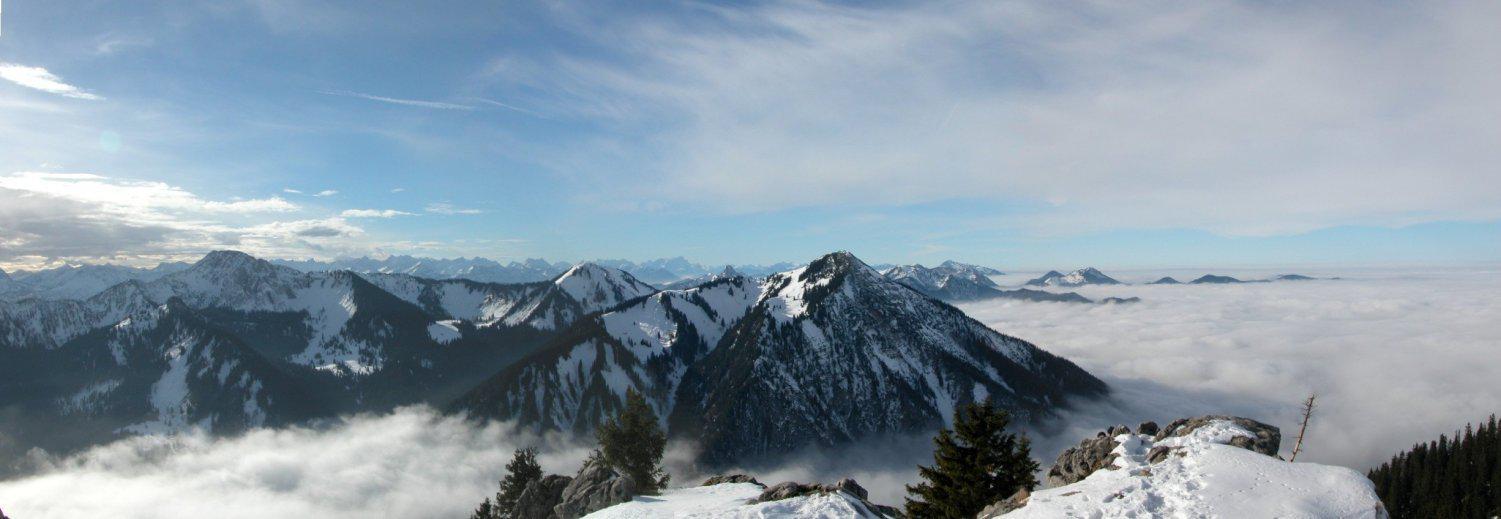
The Bavarian Alps contains Zugspitze, the tallest mountain in Germany. It is a great place to visit, and if you love hiking and mountain climbing, then this is just the place for you to visit.
The Romantic Road
While not really a tourist attraction “spot”, this road offers one of Germany’s most picturesque drives. This road offers travelers to explore and discover the rich culture, scenery, and values of Germany.
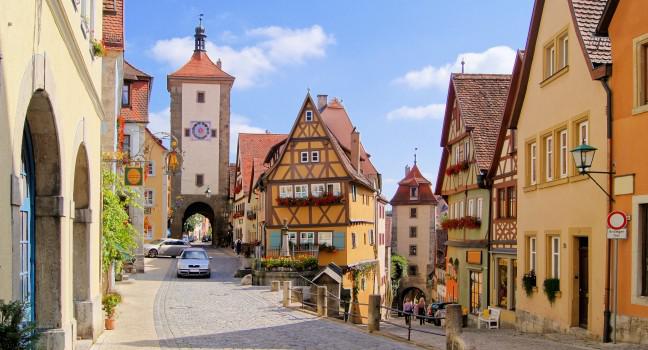
The Romantic Road stretches between Würzburg and Füssen and takes travelers through an amazing journey with awe-inspiring views which include the Neuschwanstein Castle, the town of Rothenburg ob der Tauber and many quaint, beautiful, villages. Romantische Straße is a tourist route that was established in 1950. It is approx. 410 km long and runs in the southern part of Germany in the states of Bavaria and Baden-Württemberg. The route is so popular that it is ranked 13th among Germany's hundred most visited attractions.
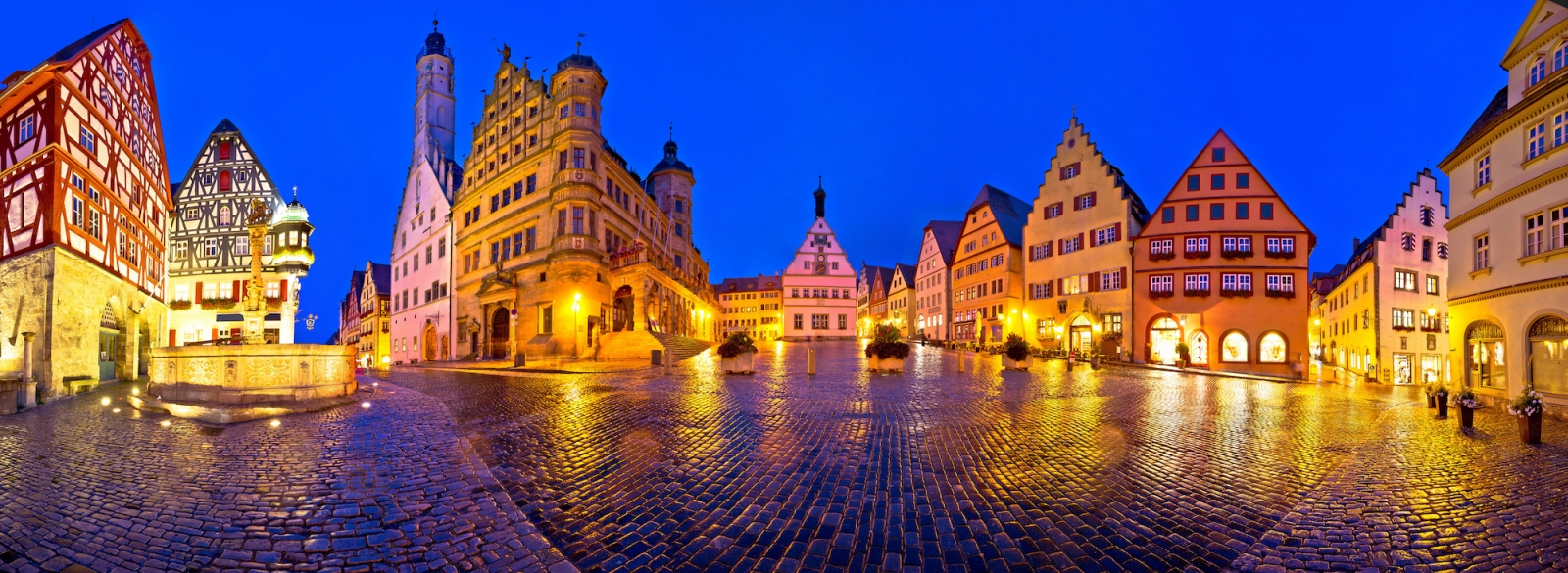
Rothenburg ob der Tauber is a village in Middle Franconia, the province of Bavaria, Germany. It is famous for its well-preserved medieval old town, a popular goal for visitors from all over the world. It is part of the beautiful Romantic Road around the southern part of Germany. Today it is one of only 3 towns in Germany that still have totally entire city walls.
The Romantische Straße winds its way from Würzburg in Franconia through rolling vine-clad hills to Füssen in Bavaria, where the Alpine peaks are hidden in light clouds. On a trip along the romantic road, you will experience Germany's most idyllic medieval towns with half-timbered houses, colorful flower streets, onion-shaped baroque towers, splendid mansions, and Biergärten. Here the scene is set for an eventful self-drive journey through southern Germany.
If you are traveling by car, motorhome or motorbike, simply follow the brown signs that connect the individual towns along the road. Cyclists can also cycle from Würzburg to Füssen on the signposted "Radfernweg Romantische Straße", which is 460 kilometers long. On the way, you will pass romantic Rothenburg ob der Tauber, Dinkelsbühl, and Nördlingen as well as medieval castles and beautiful churches.
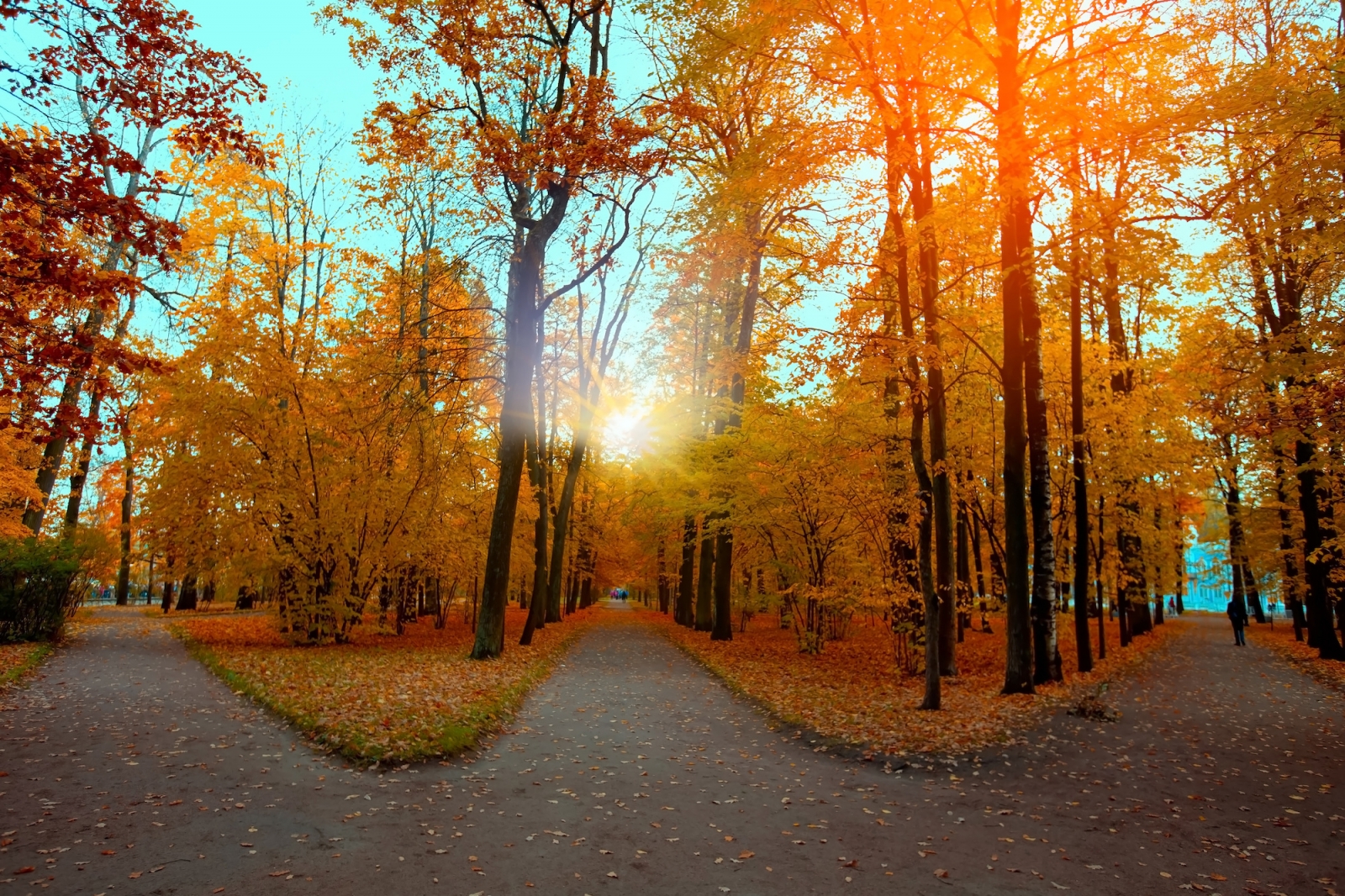
Lake Constance
Lake Constance is one of the most visited attraction spots in Germany. The lake is located between three different countries i.e. Germany, Switzerland, and Austria.
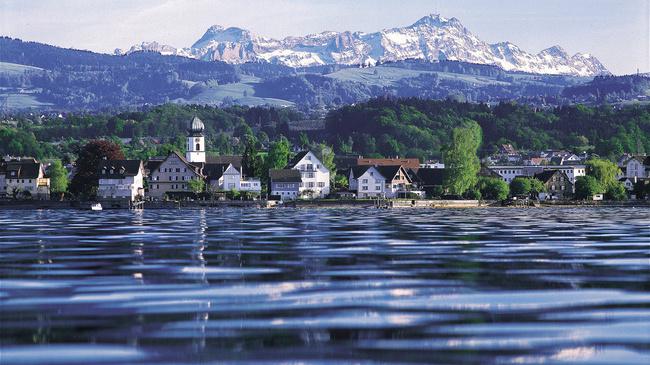
The Lake consists of many islands; Mainau Island being the most popular. With great views and picturesque settings, Lake Constance attracts a large number of tourists every year.
BAVARIAN FOREST NATIONAL PARK
In southeastern Germany on the border with the Czech Republic and Austria lies the postcard-perfect landscape of the Bayerischer Wald with mysterious bogs, mountain streams, and glacial lakes. The Bayerischer Wald and Böhmerwald national parks together form the largest protected forest area in Central Europe and contain 300 kilometers of hiking trails and 200 kilometers of cycle paths. You can experience this natural treasure in a fun and different way if you set out on the Waldwipfelweg or Baumwipfelfad, the long wooden bridges that wind through and over the treetops of the forest.
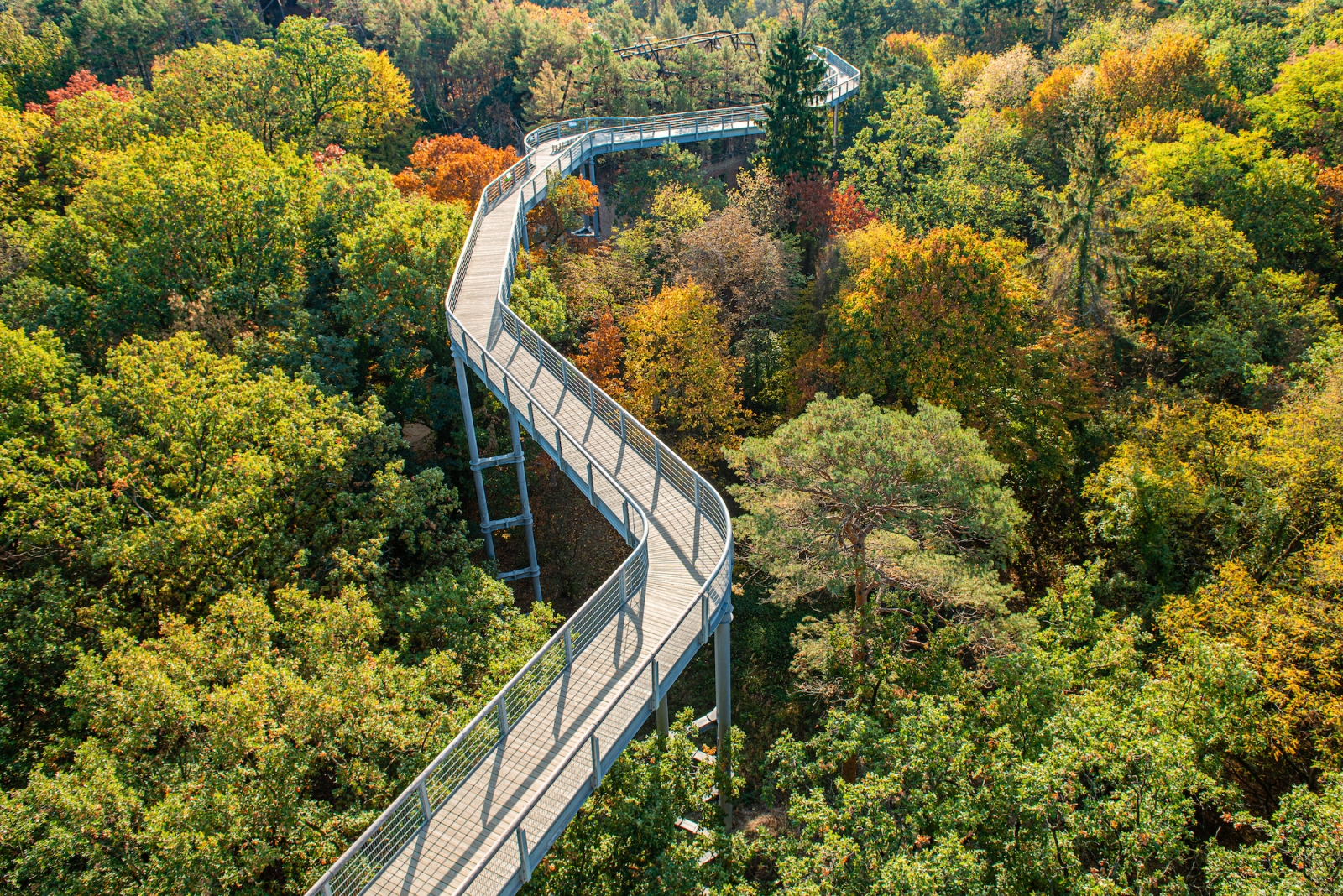
The Bayerischer Wald is a cornucopia of fun experiences for the whole family. Take the children on horse-riding or canoeing trips, speed up the field on the summer toboggan run in St. Englmar or try your hand at high-flying obstacle courses in the climbing forests. The region also abounds in theme parks such as the western town of Pullman City, the Viking town of Keltendorf, the fairytale castle of Lambach, and various water parks.
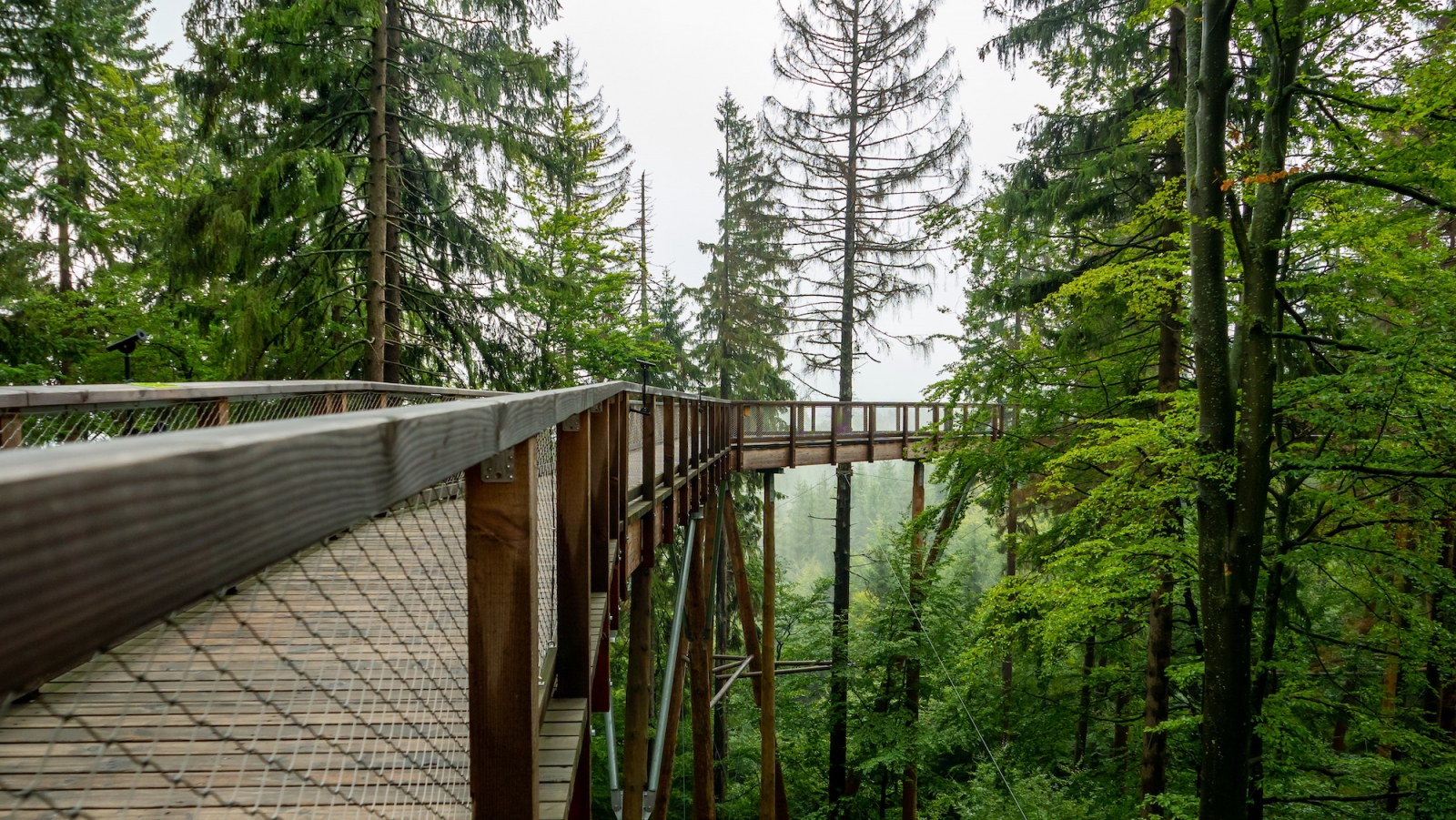
In several places, there are fantastic Tree Top Walks. In the Bayrischer Wald National Park, you will find, for example, the World's longest Tree Top Walk in Baumwipfelpfad near Neuschönau. The height is between 8 and 25 meters above the ground on the 1,300-meter-long trip and ends in the huge open wooden tower, where the platform is a whopping 44 m up and the highlight of the visit. From here there is a fantastic view of the trees and the landscape.
At Sankt Englmar in Maibrunn, there is another somewhat smaller Tree Top Walk at 370 meters, from which there is also a breathtaking view. Here there are fun activities with guessing games about the local animals... just something for the children.
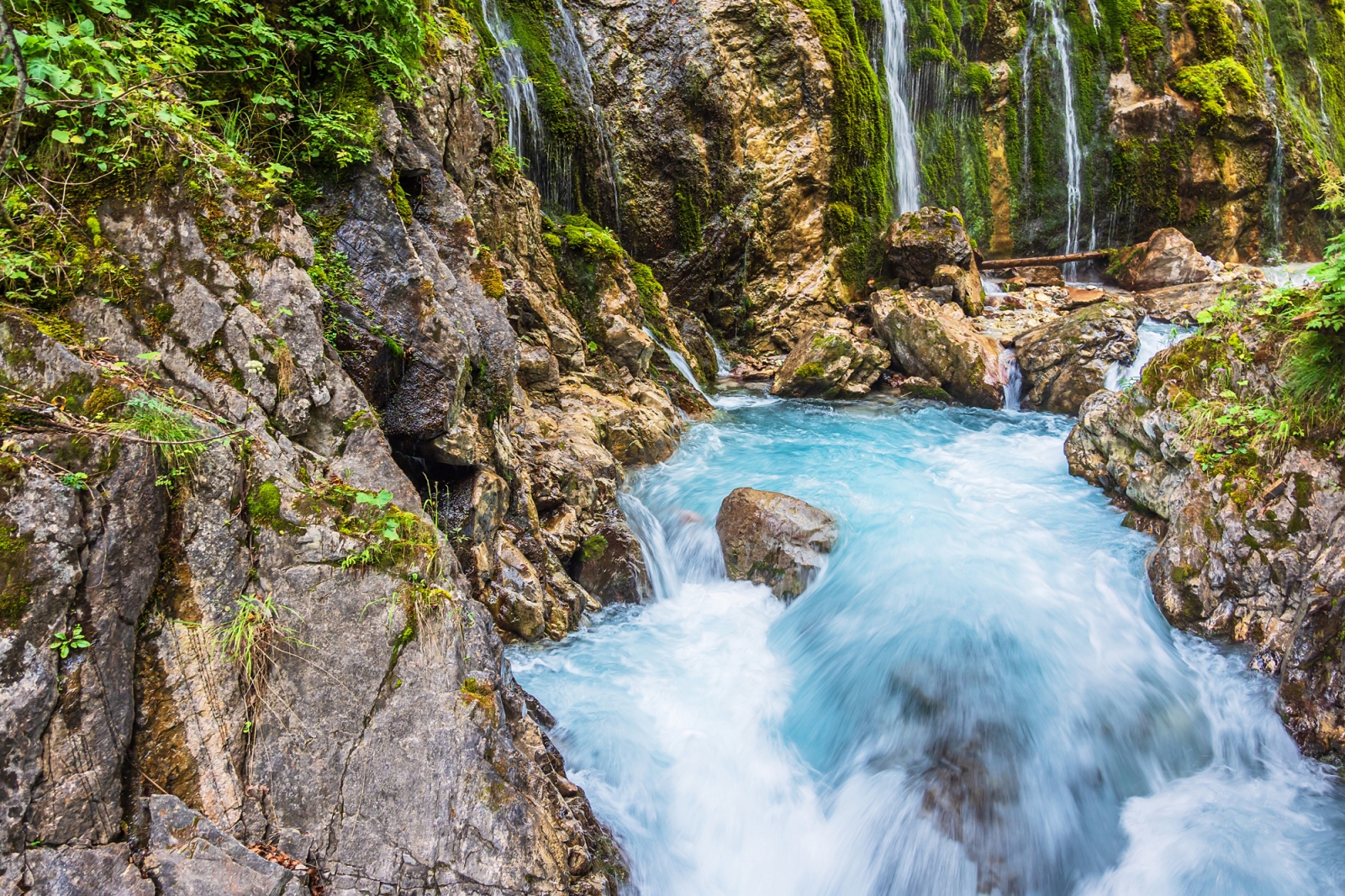
THE WIMBACHKLAMM GORGE IN THE BERCHTESGADEN NATIONAL PARK
Wimbachklamm in Berchtesgaden National Park is not only a geologically impressive sight and a wild and romantic natural monument but also a popular destination for hikers and photographers. Access to the Wimbachklamm is only possible from the beginning of the gorge, where you move along the edge of the cliff and right down to the rushing water.
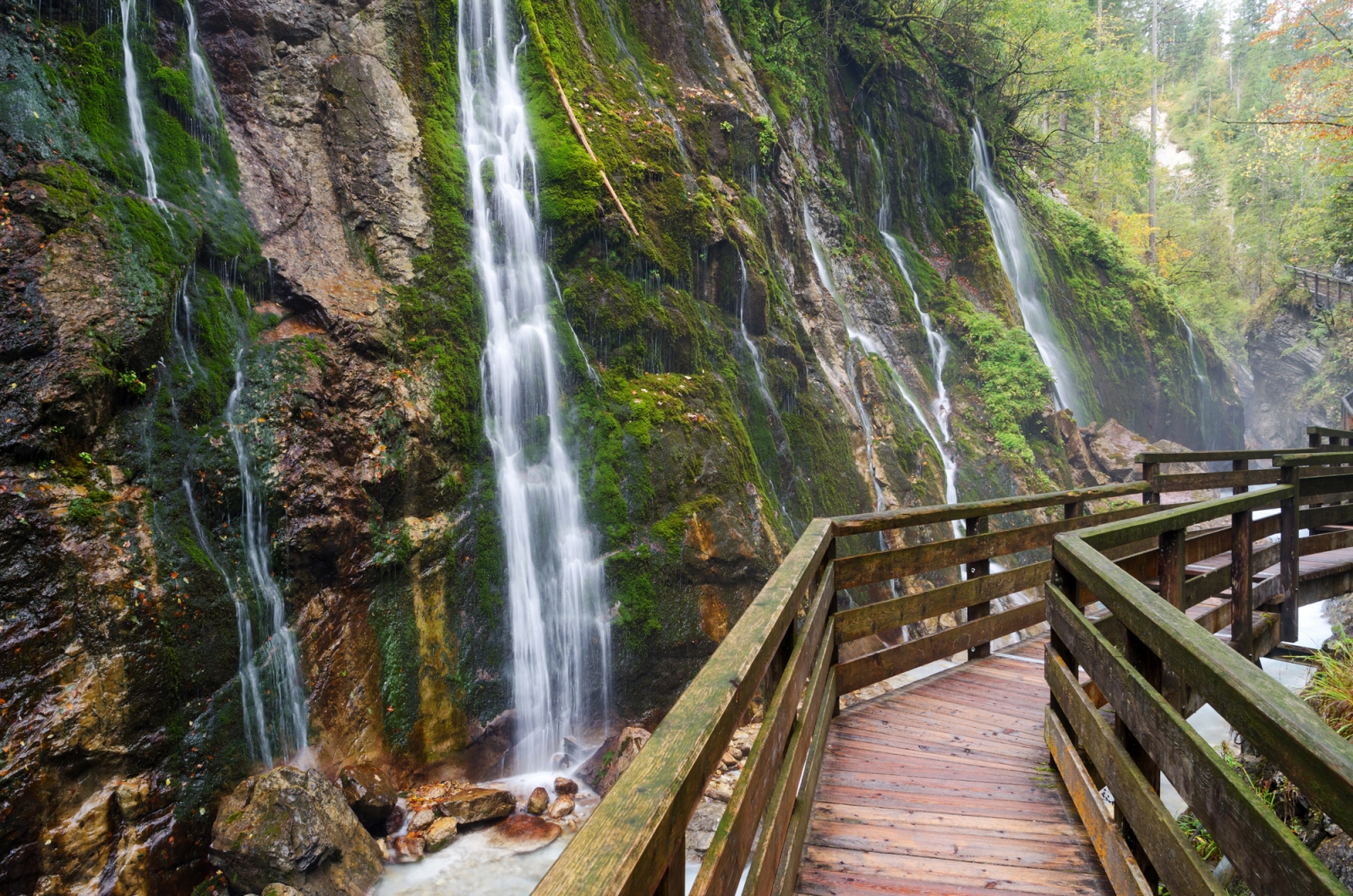
The path through the Wimbachklamm only requires a short walk. The trip is very spectacular and extends over a length of around 200 meters. The hiking trail moves over bridges and walkways along the canyon's steep rock walls. If you go a little further, you can stop at Wimbachschloss, which was originally a hunting lodge for the Wittelsbachers. Today it functions as a mountain restaurant in the national park.
NATIONALPARKEN HARZ
The Harz National Park straddles the old Iron Curtain between Lower Saxony and Saxony-Anhalt in the middle of the Harz. 247 square kilometers from Herzberg in the southwest to Ilsenburg in the northeast, consisting mainly of beech forest in the lowlands and spruce on the hillsides. But as forestry slowly grinds to a halt, the red spruces are replaced by a wilder and more varied natural forest.
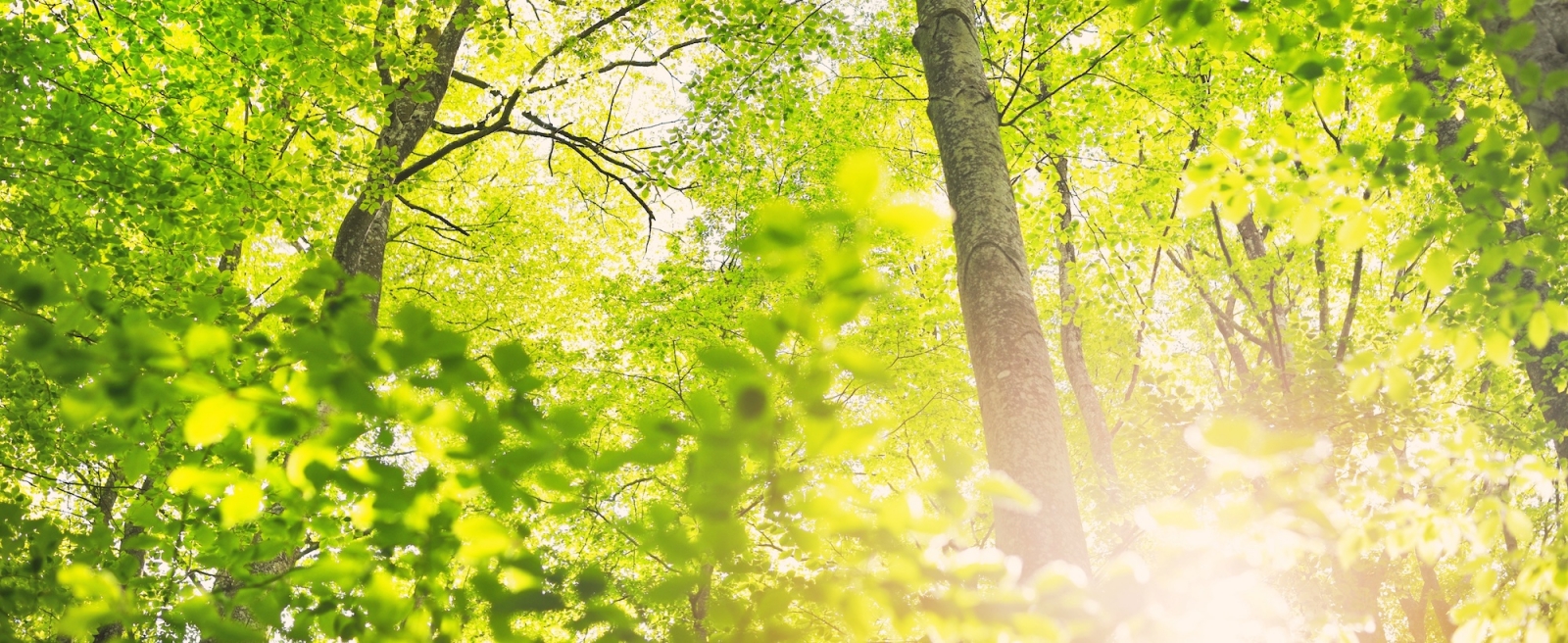
Inside the Harz National Park, you will meet almost only hikers, because only a few people live there. There are also few roads - only the B242 from the west and the B4 from the north cut across the protected landscape. But on foot you are king and with trickling water and birdsong as accompaniment, you can frolic on a multitude of different hiking trails - 300 km in total.
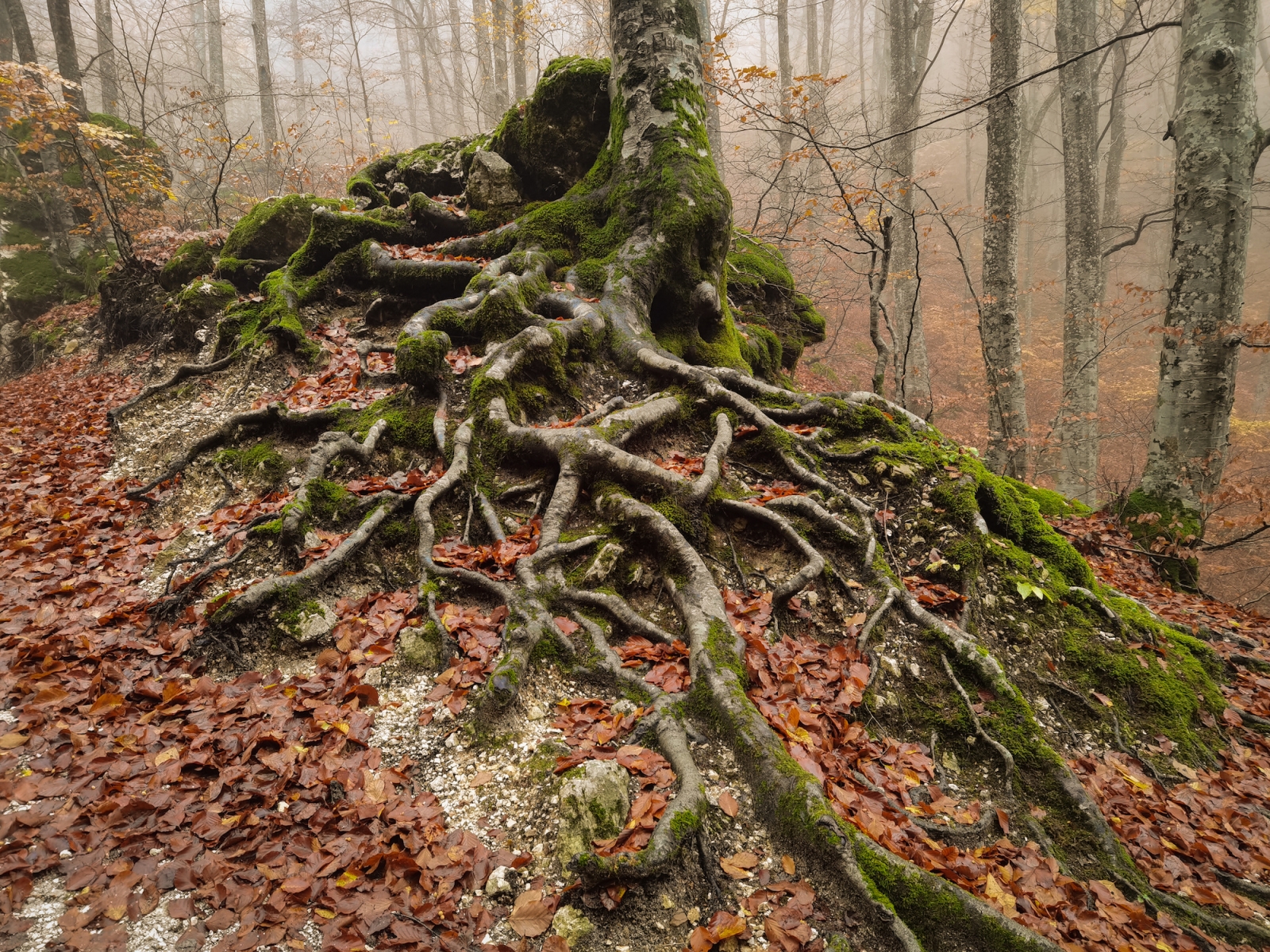
The Harz National Park is not only mountains and hills, but also wet bogs with shiny red cranberries and quiet forest glades where rare butterflies flutter about. The high bog gets all its nourishment from above, from the air and the rain - no plants reach down and get food from the ground because the entire bog floats above the waters. The bogs in the Harz have preserved their originality. Today, they are important for nature conservation and science throughout Europe. You naturally start your trip out into the terrain from the national park house Torfhaus (peat house) at Altenau; from here you can move out into the hard-to-reach wet world, which safe paths have made passable to humans.
THE NORTH GERMAN ISLAND - RÜGEN
If you want to combine your self-drive holiday with a beach holiday, the northern German island of Rügen is just the thing for you. The island, which almost rubs noses with Falster, is a scenic oasis with chalk-white sandy beaches, chalk cliffs plunging into the water, nostalgic seaside hotels, and the equally nostalgic Raging Roland; the small steam train that connects the island's seaside resorts at a low 30 km/h. Visit the white town of Putbus with its beautiful mansions, neat parks, and avenues, or replace the car with a bicycle and explore the island's castles and natural parks on two wheels.
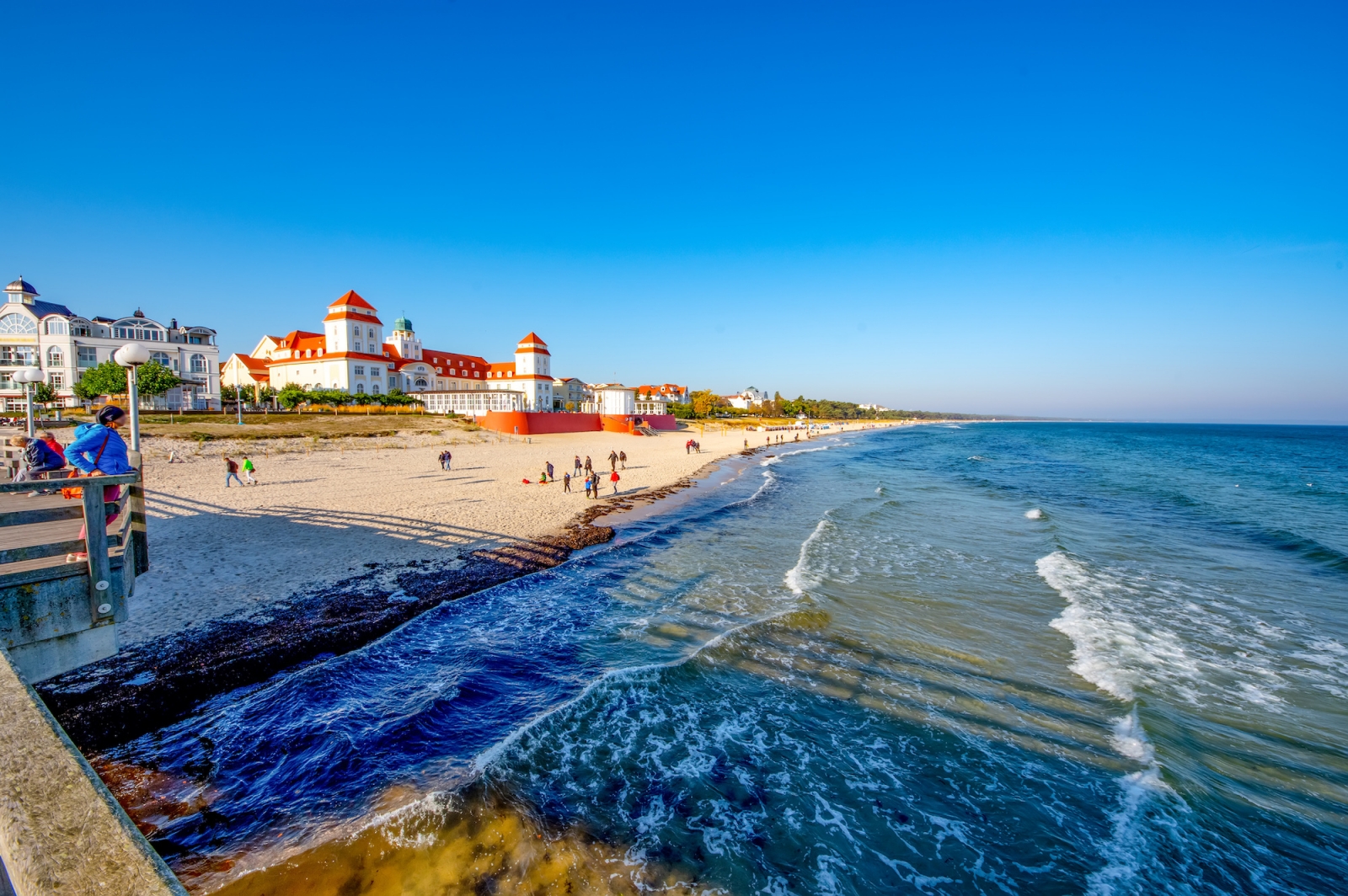
Rügen is one of the most famous vacation destinations in Germany. Most visitors come to Rügen from June to August, but it has a perfectly mild climate during the winter season as well. The first swimming structure on Rügen appeared in 1795 at the spring in Sagard which is very rich in minerals. The island suggests a tremendous combination of various shore and beach areas. Rügen is a popular destination for kitesurfers and windsurfers.
Binz is the island's resort with a colorful promenade, shops, restaurants, and cafés. The beautifully renovated beach villas give the area a particularly fashionable atmosphere. You can also explore the rest of Rügen by bike. The distances are short and several routes are well-marked. For example, take a trip out to the small but wonderful Jasmund National Park. The characteristic feature is the impressive chalk cliffs, which stand in strong contrast to the changing colors of the beech forest.
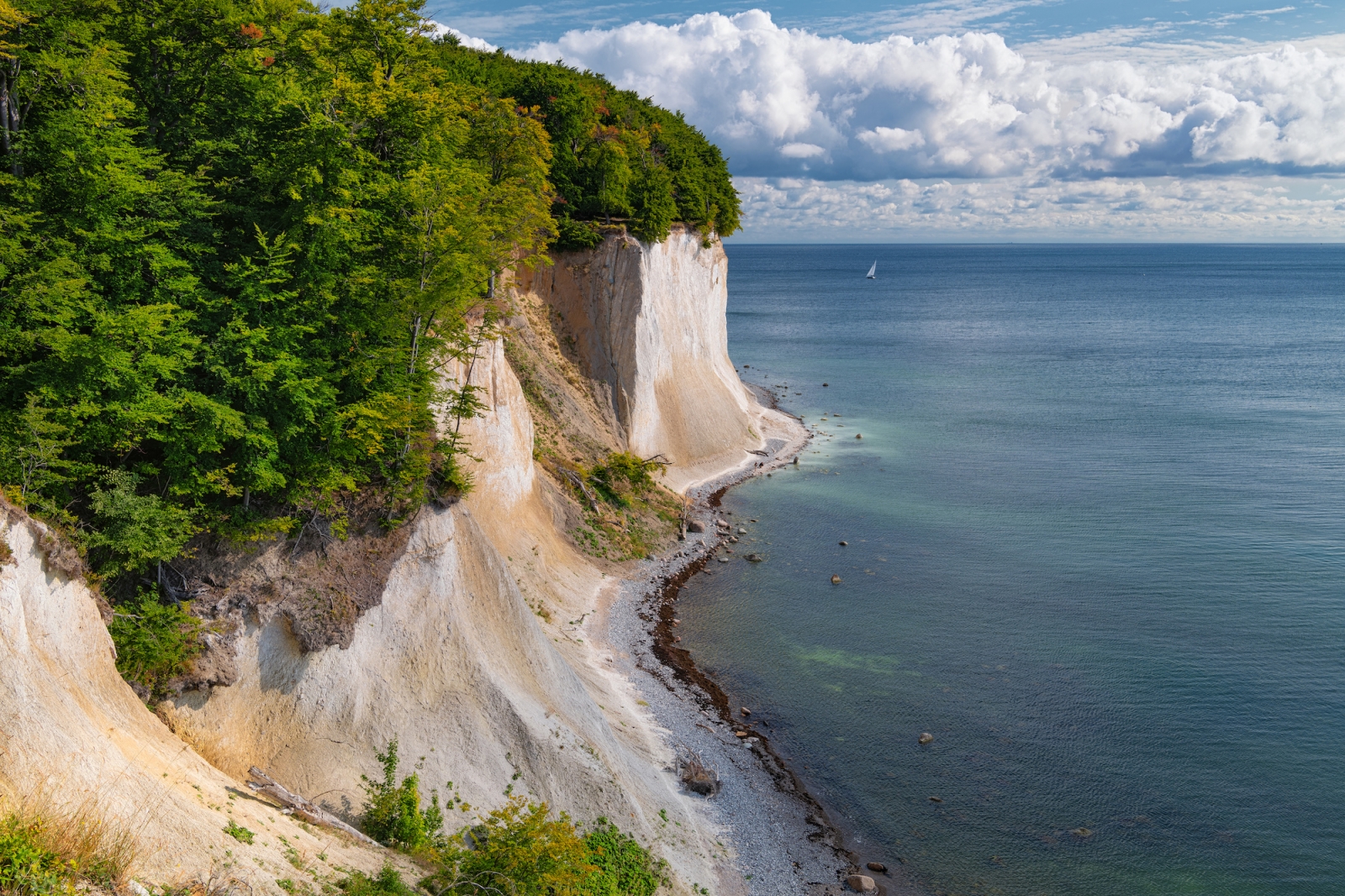
THE GERMAN WINE ROUTE ON THE RHINE
Imagine yourself moving through a sun-kissed landscape with the Rhine's vine-covered hillsides lightly decorated with almonds, figs, and lemons and the UNESCO-protected Pfälzerwald as a faithful companion. When you get tired of driving, you stop in picturesque villages, castle ruins, or exclusive wineries, where you fill your stomach with delicacies from rustic cuisine and local wine. Does it sound too good to be true?
If you go on a wine journey along the 85 km long Deutsche Weinstrasse from Bockenheim an der Weinstrasse (approx. 80 km south of Frankfurt) to Schweigen-Rechtenbach on the French-German border, it all becomes a reality. Yes, a self-drive holiday on the Rhine is a holiday of enjoyment. See here what you can look forward to along the way.
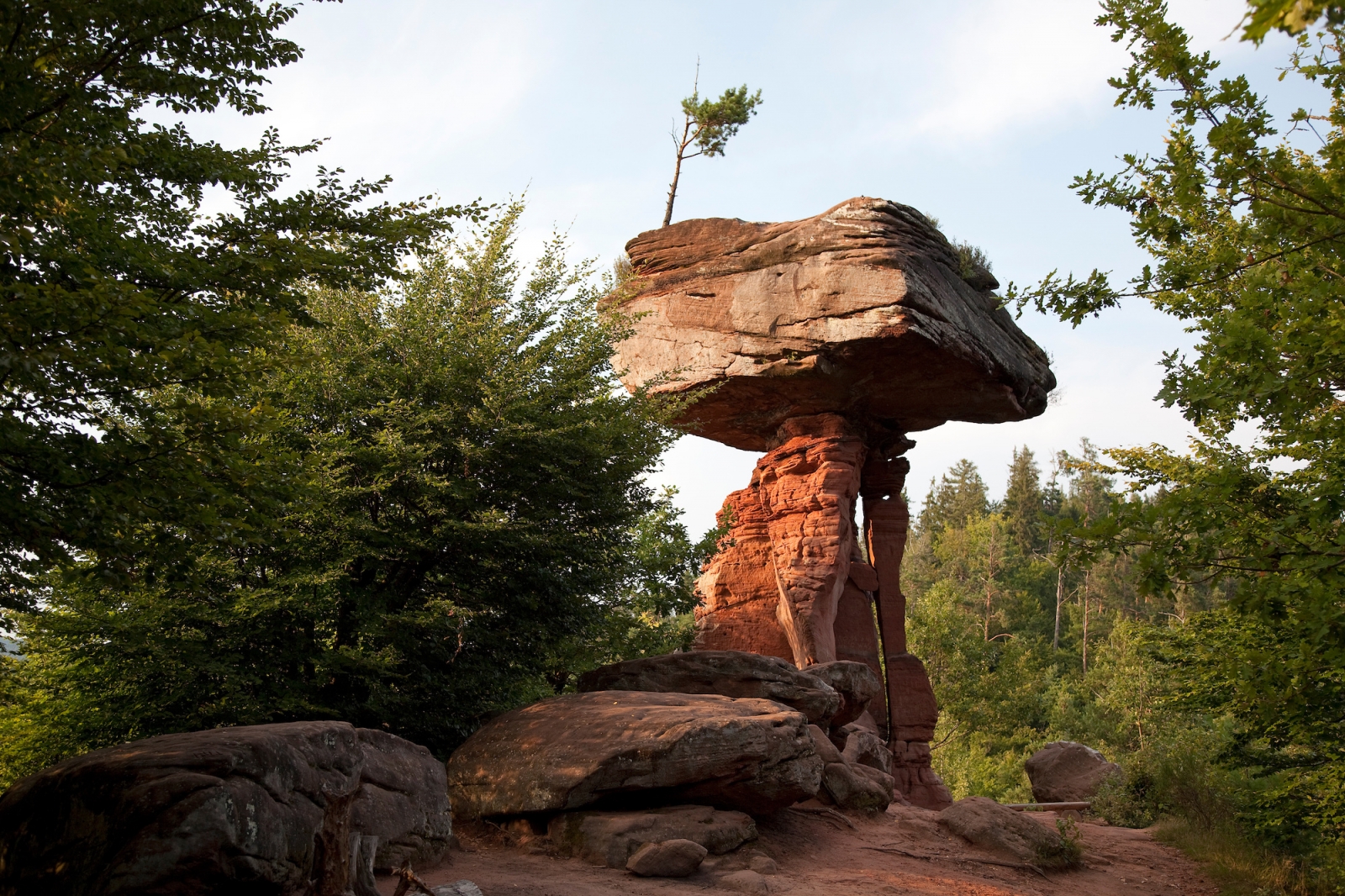
A journey along the Deutsche Weinstrasse is truly a sensual trip. The scent of the hilly and lush landscape of the vineyards, combined with heavenly drops of Riesling and the German version of the wine Pinot with the name Burgunder, creates the perfect southern German atmosphere and charm.
Along the 80-kilometer-long route in the Rhine-Mosel area, there are plenty of opportunities to taste what is considered the world's finest green grape, at vineyards where the farmers host wine tastings and sweet experiences. And then the food in the area is typically the luxurious kind.
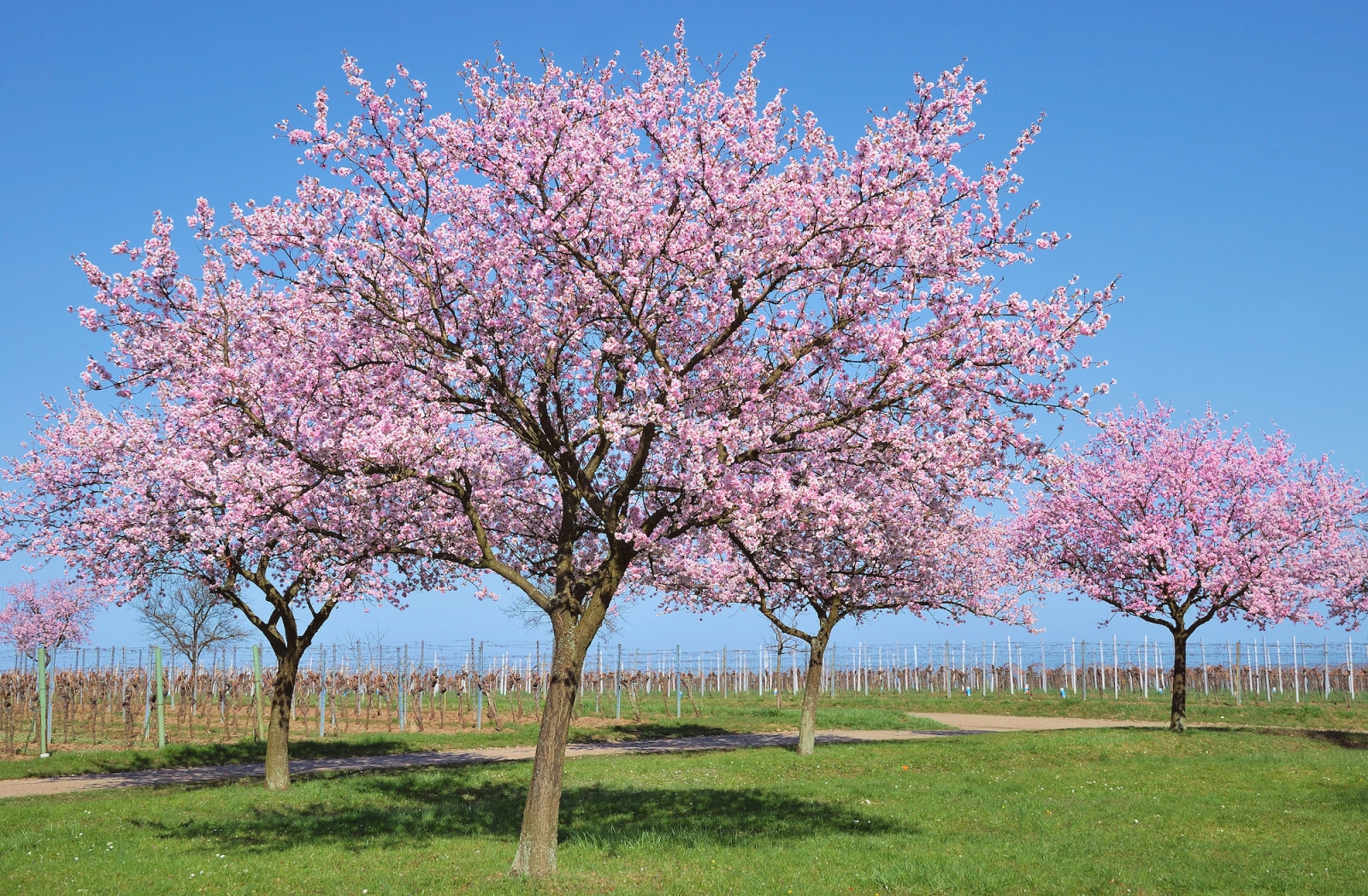
WELLNESS AND LATE-GOTHIC CHURCH SPIRES
The wine route is not only known for its wonderful wines, but also for its many small, charming medieval towns with cobbled streets, medieval castles, and late-Gothic church spires. As a small bonus, a handful of the towns also market themselves as spa towns.
Bad Dürkheim's seven springs in the northern part of the route form the setting for luxurious wellness and spa lounges, and their main attraction is worth a visit - namely the world's largest wine barrel, which now serves as a restaurant.
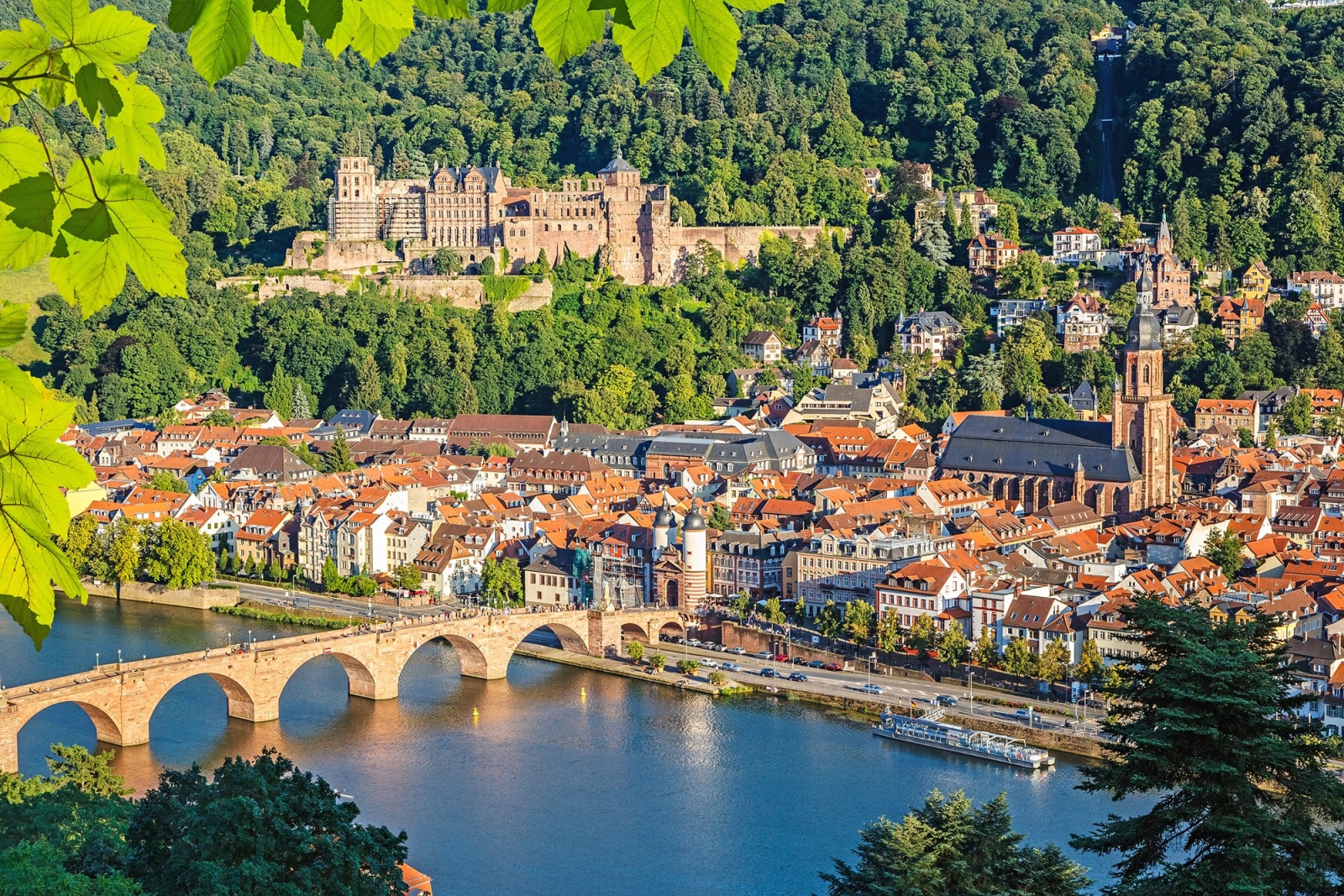
The ruins of Heidelberg Castle are a landmark of Heidelberg, Germany. They are among the most significant Renaissance complexes north of the Alps. The castle has only been partly reconstructed since its destruction in the 17th and 18th centuries. It is located 80 meters (260 ft) up the northern slope of the Königstuhl hill and thereby overlooks the old downtown. It is linked by a middle station on the Heidelberger Bergbahn funicular that runs from Heidelberg's Kornmarkt to the top of the Königstuhl. The earliest castle complex was created before 1215 and later developed into two castles. The current establishments had been extended by 1640, before injury by later wars and fires. In 1764, a lightning bolt provoked a fire that ruined some reconstructed parts.
Further south, you can enjoy panoramic views of the surrounding rolling vineyards at Hambacher Schloss, close to the cozy town of Neustadt an der Weinstrasse. End the route with a stop in the cozy town of Bad Bergzabern, where one beautiful half-timbered house is extended by another.
Your visit to Germany doesn’t end with you visiting the villages and cities and museums. There are many places in Germany that are known for their natural beauty, and if you are a nature lover, you must visit these places on your visit to Germany. With easy access to most of the natural wonders of Germany, you can visit all of them without hesitation with the best recommendations from our local private English-speaking tour guides in Germany.
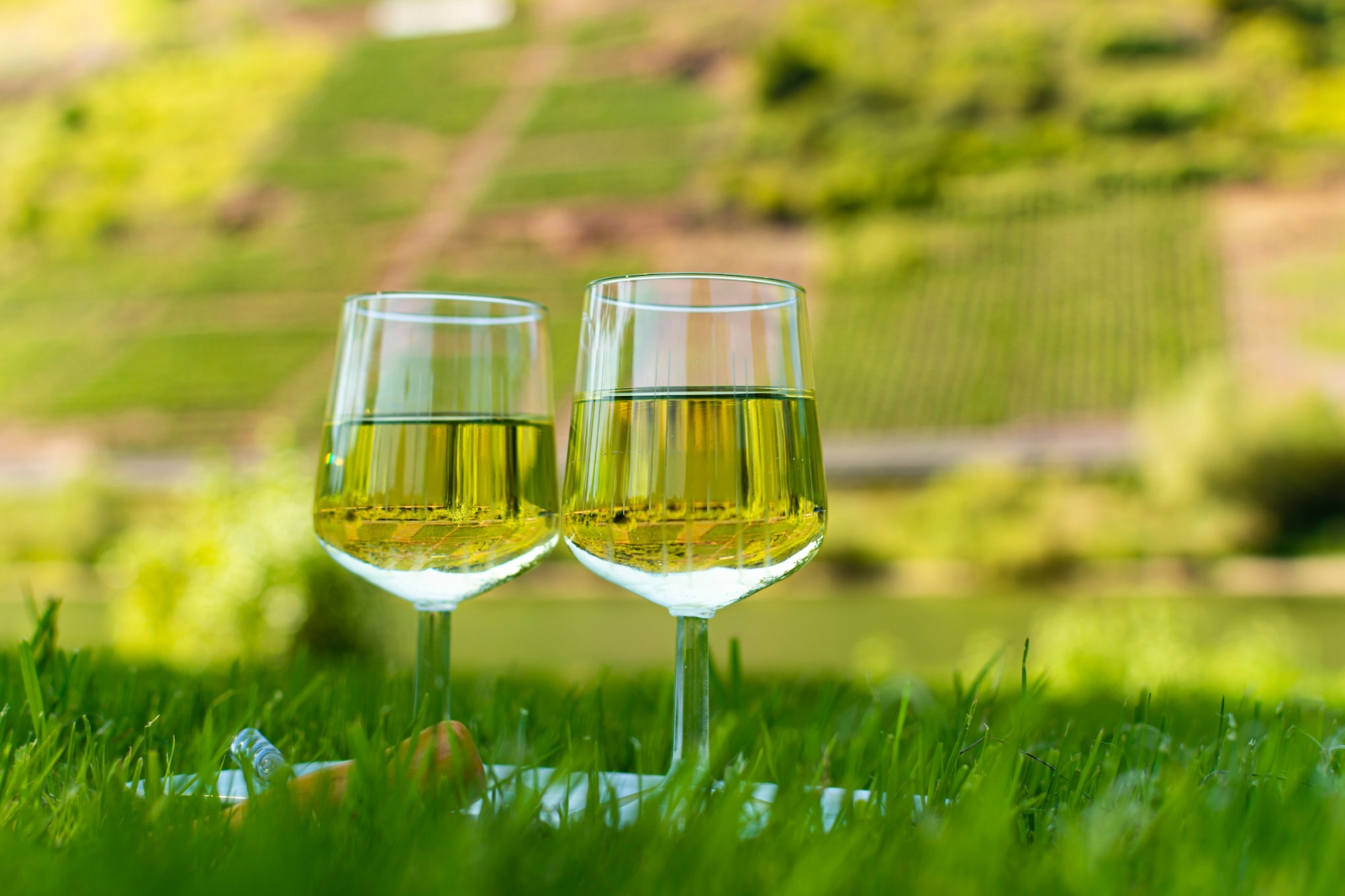
Read our previous article Cancun-Riviera Maya: destination for lovers
Read our next article Deeper Learning about Australian Wines and Wine Tourism










